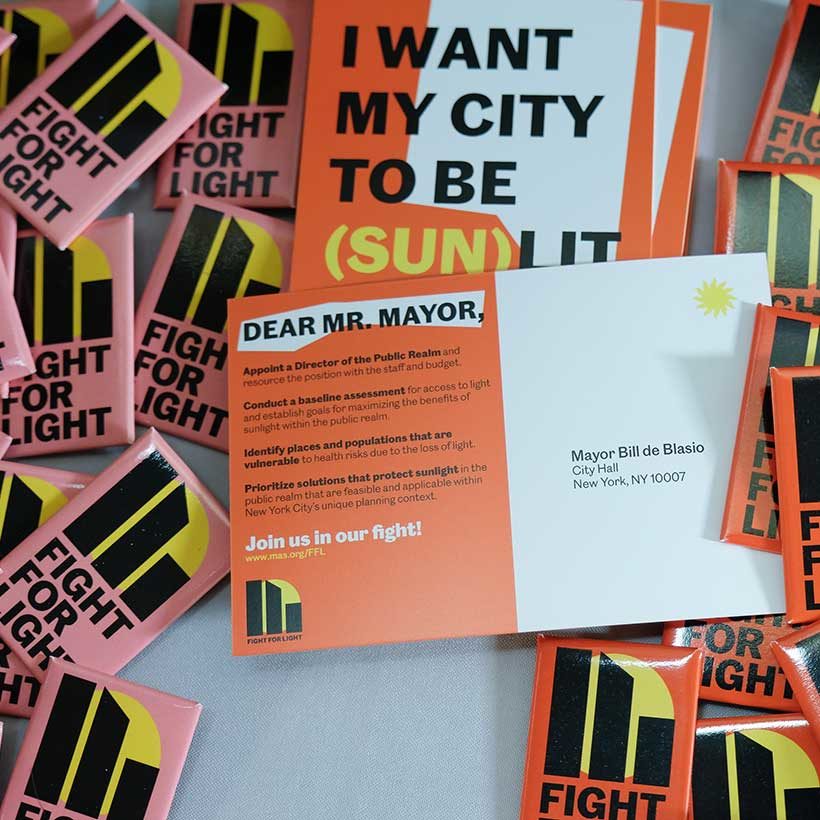FAR Cap Requires a Measured and Phased Approach
Excerpt from a letter sent to State legislators regarding the lifting of the 12 FAR cap
MAS believes that New York City can meet its housing goals while keeping the 12 FAR cap in place. However, if the cap text in the Multiple Dwelling Law is to be amended, we urge you to consider more stringent conditions and, ideally, a phased approach.
MAS believes that changing the FAR cap should be done explicitly and exclusively to develop affordable housing and we were pleased to see the New York Senate and Assembly budgets included a proposal to make any lifting of the cap subject to affordable housing requirements. Yet, we need to go further for this to truly help New Yorkers citywide at the low- and middle-income brackets who need housing.
We urge you to add specific metrics on affordability to the law. The Mandatory Inclusionary Housing has not delivered the affordable housing that we had hoped it would and the City continues to use percentages of AMI that are not affordable to residents in the neighborhoods where buildings are being built.
Changes to the FAR cap should also mandate a plan to equitably distribute new housing development across the city in a way that reflects the existing context of neighborhoods and true community needs. MAS believes that increasing the FAR cap without such a comprehensive, phased plan would concentrate growth pressure on areas of the city, like lower Manhattan, downtown Brooklyn, and Long Island City, where development is already densest.

MAS also urges state legislators to consider raising instead of lifting the FAR cap with conditions, in a phased approach as part of a comprehensive housing plan that includes City and State programs to ensure housing is increased in an equitable and sustainable manner.
Our proposed phased approach is outlined below. Legislation could be passed this session with conditions that must be met to trigger the changes to the law.
Phase 1:
The 12 FAR cap is removed immediately upon the passage of legislation ONLY for the conversion of existing commercial buildings built prior to 1990 to residential use. The State passes measures that incentive reuse of existing building stock.
Phase 2:
The FAR cap is raised to 14 (not lifted), no sooner than 2025, and only after the following actions have been completed
State-conditioned actions:
- The State Legislature passes a 421a substitute (485X) that truly incentives the building of affordable housing.
- The State requires the City to preserve rent stabilized units, i.e. when rent stabilized units are lost in buildings that are torn down, they will be replaced in the new buildings, guaranteeing no net loss of rent stabilized units overall.
- The State alters the qualifications of Historic Tax Credits to allow for greater use in New York City.
City-conditioned actions:
- City of Yes for Housing Opportunity has been fully vetted and passed by the City Council and signed by the Mayor, incentivizing new housing across the city, taking advantage of vast amounts of available FAR.
- The City drafts for public review, a new R-11 zoning category with specific regulations and requirements for height and bulk, affordable housing, and affordability levels.
- The City passes rules for greater affordability in exchange for the greater FAR:
- Beyond MIH’s 25% base requirement.
- Based on neighborhood AMI for the additional FAR.
- Requiring affordable units be built on site, as is currently required by MIH.
- Outstanding modifications, if appropriate, to CPC rules regarding transfer of air rights from historic properties, if not already captured by City of Yes Housing Opportunity.
This phased and holistic housing plan includes essential requirements and incentives from the State and City that must all be implemented for a diverse and affordable housing supply throughout New York City.





